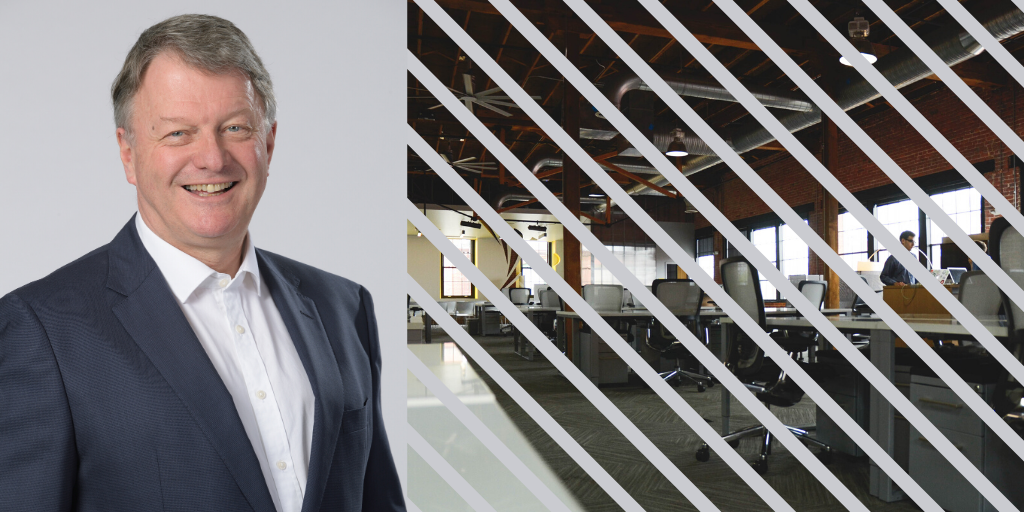Written by Gareth Morris, director for health, safety, quality and environmental compliance at the Morson Group
As the Government continues to produce guidance and issue advice on how different industries can offer their workforce a safe return to work, we are encouraging clients to think outside the box.
While the pandemic has played out, we have analysed how different sectors have adapted their workplace environments to ensure the safety of their teams and have taken those learnings to see how they might be applied in other areas. What we have seen is that safety critical industries adopted social distancing measures with more ease than it was originally predicted. Now, as office-based teams look to return to their environments, there are a wealth of learnings which can be applied to ensure every individual is safe.
However, there are also elements of the stringent guidance being developed for corporate workplaces that could be introduced to ‘essential’ industries – the likes of construction, rail and manufacturing – in a retrospective capacity, to ensure that longer term, every workplace is setting exemplary standards of safety.
Safety critical environments
As the market leaders in rail, we have supported teams across the UK to keep the country’s infrastructure moving even during the novel challenges of the pandemic.
In the rail sector specifically, essential workers have taken to mobilising, planning and delivering railway maintenance and refurbishment works overnight with reduced workforces to enable them to social distance. Doing so has kept railways operational, hauling food, PPE, fuel and key workers to their destinations, but has required the immediate implementation of new operating procedures including the speedy deployment of signage to high visibility vests and underground environments to reiterate the importance of maintaining a physical distance apart.
However, our in-depth risk assessments of these environments – which must be carried out before workers can return to site – provide food for thought for office-based staff looking for guidance on everything they must consider before declaring their workplace safe.
For example, we advise that spaces which have been unoccupied for a number of weeks are deep cleaned ahead of employees returning, as well as developing rules on who is allowed to touch particular pieces of equipment to ensure the virus doesn’t have the potential to pass to other people through hard surfaces.
Additionally, we ask managers to consider how social distancing will be maintained in communal spaces that might be restrictive – kitchen facilities, entrance areas, lifts and small meetings rooms, for example – and to have a plan in place if a worker becomes ill on site; how will they be removed from the space as efficiently and safely as possible, and what remedial actions are required?
Construction projects also largely rely on site visitors for continuity; and as such, safeguarding comes down to more than team members. Any visitor to site who comes into contact with an infected individual or surface is at risk of taking the virus away to a whole new network of people. Pre-visit visitor checks are recommended to prevent the possible introduction of the virus to a work place.
All of this, though largely relevant to on-site workers, should be considered by office managers and directors before suggesting that staff should return to work.
The traditional workplace
Though many offices have an allocated health and safety advisor, unlike construction sites they are not purely driven by this type of guidance; health and illness related sickness is typically low, and there are very few occasions in which office environments have to overhaul their usual working practices. A pandemic, however, is one of those situations.
It will be critical that behaviours change in offices before staff can return to work, but altering the mindset of millions of workers will be the hardest part of this process. As such, it’s crucial that businesses implement a clear and strong communication plan, explaining the changes that are to be made and how they will take effect from day one, rather than being phased in. Doing so will embed safety first, mindful behaviour and seeing the approach enforced from the top down and bottom up will ensure it is applied at every level.
Just as safety critical environments consider who is touching machinery, offices should think about communal use of equipment such as printers, shared computers, internal doors and even the often-ignored fixtures of a building such as bannisters, light switches and kettles.
While offices are usually densely populated with banks of desks of employees working closely together – a layout now considered completely unsafe in the current climate – as with the rail and engineering industries, employers will have to use novel tactics to ensure staff are socially distanced. This may mean considering which team members can only work from an office and which can continue to work from home, or implementing an alternate office-shift pattern, with cleaners brought in to sanitise an office between each change over.
Employers will have to take responsibility for symptom-spotting; we have introduced temperature taking of staff as they enter our offices, and this will likely become commonplace with fixed temperature testing stations. And as we continue to rescale up office environments, just as construction workers are looking to protect on-site visitors, building managers will have to consider how to receive post and deliveries; in shared office spaces, will security teams require PPE?; and how will you risk assess clients coming in for socially distanced meetings?
Have we all become safety critical?
Across environments, there are permanent fixtures and fittings which must be considered; for example, how will toilet facilities be kept clean in between visits? Are ventilation and air conditioning units serviced to a level that provides reassurance the virus won’t circulate, and how can team members safely take refreshment breaks; where, exactly, will people eat and drink?
Our knowledge and presence across multiple sectors is enabling us to take a bird’s eye view of this situation, and how industries can learn from one another to protect their teams.
Morson Training, for example, is currently developing a training module advising how businesses can adopt new health and safety practices, while our own health and safety team is available to clients and other businesses to work as consultants to support the return of their teams.
Additionally, we have created a basic COVID version of our Fit For Work app; originally developed for the rail industry, it can be used in corporate workplaces to detect symptoms of the Coronavirus.
We believe our ways of working set an industry standard and are examples of best practice; that’s why we make them available to all. Anyone wanting to utilise our roadmaps can contact me on gareth.morris@morson.com.
As we move forward and the pandemic continues to take shape, the differences between offices and construction workplaces will start to break down. No longer will the two be disparate; now more than ever before the workplace is about the health and wellbeing of the people within it. For the indeterminable future, every single workplace is safety critical.







